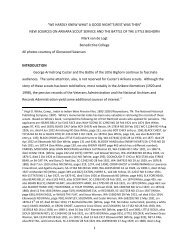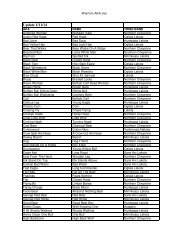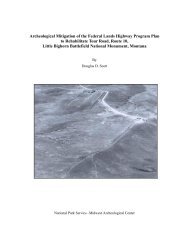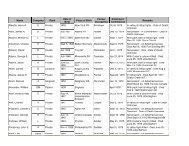Investigating the Oxbows and Testing Metal Detector Efficiency
Investigating the Oxbows and Testing Metal Detector Efficiency
Investigating the Oxbows and Testing Metal Detector Efficiency
Create successful ePaper yourself
Turn your PDF publications into a flip-book with our unique Google optimized e-Paper software.
Figure 10. The 1883 Blake map overlaid on <strong>the</strong> 1967 topographic map. The river <strong>and</strong> oxbows appear to be relatively<br />
correct. Some variation is noted in <strong>the</strong> Reno Valley fight area which may show <strong>the</strong> degree of channel change since 1883.<br />
.<br />
suggests that Blake may have captured <strong>the</strong> correct me<strong>and</strong>er configuration along <strong>the</strong> Custer<br />
battlefield segment of <strong>the</strong> river in 1883. His depictions of <strong>the</strong> remainder of <strong>the</strong> river me<strong>and</strong>ers,<br />
particularly in <strong>the</strong> vicinity of <strong>the</strong> Reno-Benteen area show more variation suggesting <strong>the</strong> river<br />
course has changed since 1883. In a recent article Pitsch <strong>and</strong> Wert (2007) assessed <strong>the</strong> river<br />
changes in <strong>the</strong> Reno valley area. They suggest <strong>the</strong> Reno Valley fight river me<strong>and</strong>ers have<br />
changed through time, but do not suggest that <strong>the</strong> river has moved to a significant degree from<br />
21








